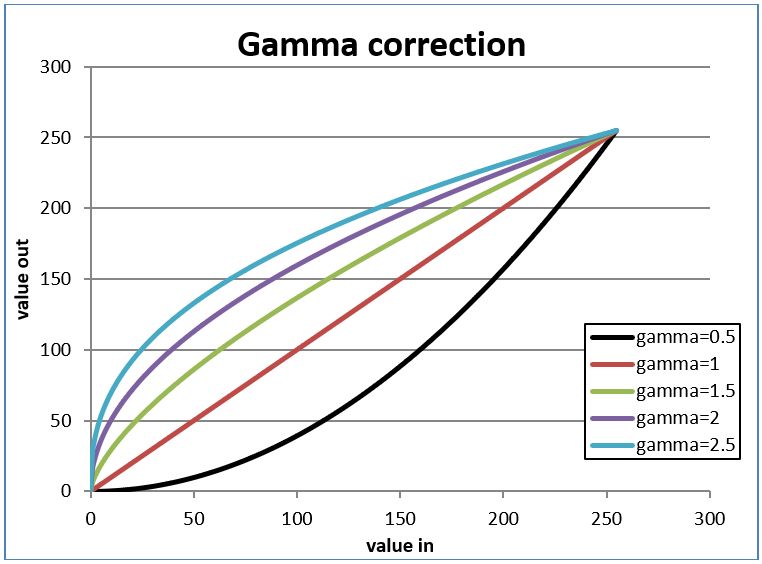Chapter VIII: Appendix: The recipe of an RGB and the definition of gamma correction
Appendix: The recipe of an RGB and the definition of gamma correction
This description explains how to create the EUMETSAT-suggested standard RGB schemes. The table below shows the parameters needed to define an RGB.
Template of the parameters used in RGB “recipes”
The second column shows which channels (or channel combinations) should be visualized in the red, green and blue color beams. Before combining them, the images should be calibrated and enhanced.
- The measured values should be calibrated by calculating reflectivity (R) or brightness temperature (BT) values. For solar channels, the calibration usually includes a solar zenith angle correction: it should be divided by the cosine of the solar zenith angle. (The zenith angle should be capped, e.g., at 80 degrees.)
- Then the images should be enhanced. The enhancement expands the range (MIN, MAX) of R or BT values to the full range of display values (0-255, BYTE) using a linear stretching and possibly a non-linear stretching.
- The images should be linearly stretched within the brightness temperature or reflectivity ranges. (The 3rd and 4th columns of Table 1 contain the lower and upper limit of the corresponding ranges, while the 5th column contains the unit. In some cases, the range is 'inverted': the MAX and MIN values are reversed.)
- In some cases, a non-linear stretching is also needed. In most such cases a so-called gamma correction is performed. If the gamma parameter is greater than 1 then the image becomes brighter and the contrast of the darker tones increases. If the gamma parameter is lower than 1 then the image becomes darker and the contrast of the brighter tones increases. If gamma is equal to 1 then no gamma correction is needed. (The 6th column contains the Gamma parameter.)
The equation of the gamma correction (as it is used at EUMETSAT) is:
where,
- X is the input value, the actual calibrated value: reflectivity (R) or brightness temperature (BT),
- MIN and MAX are the lower and upper limit of the range of the stretching,
- Gamma is the gamma correction parameter,
- BYTE is the output value: the brightness intensity of the enhanced image (where the full range of display values is 0-255).
Fig. A1 illustrates the effect of the gamma correction.
Fig. A1: Effect of the gamma correction.
It is important to be aware that some US colleagues and software tools define the 1/Gamma exponent as gamma, i.e., they name as gamma the reciprocal value of what is used here.


